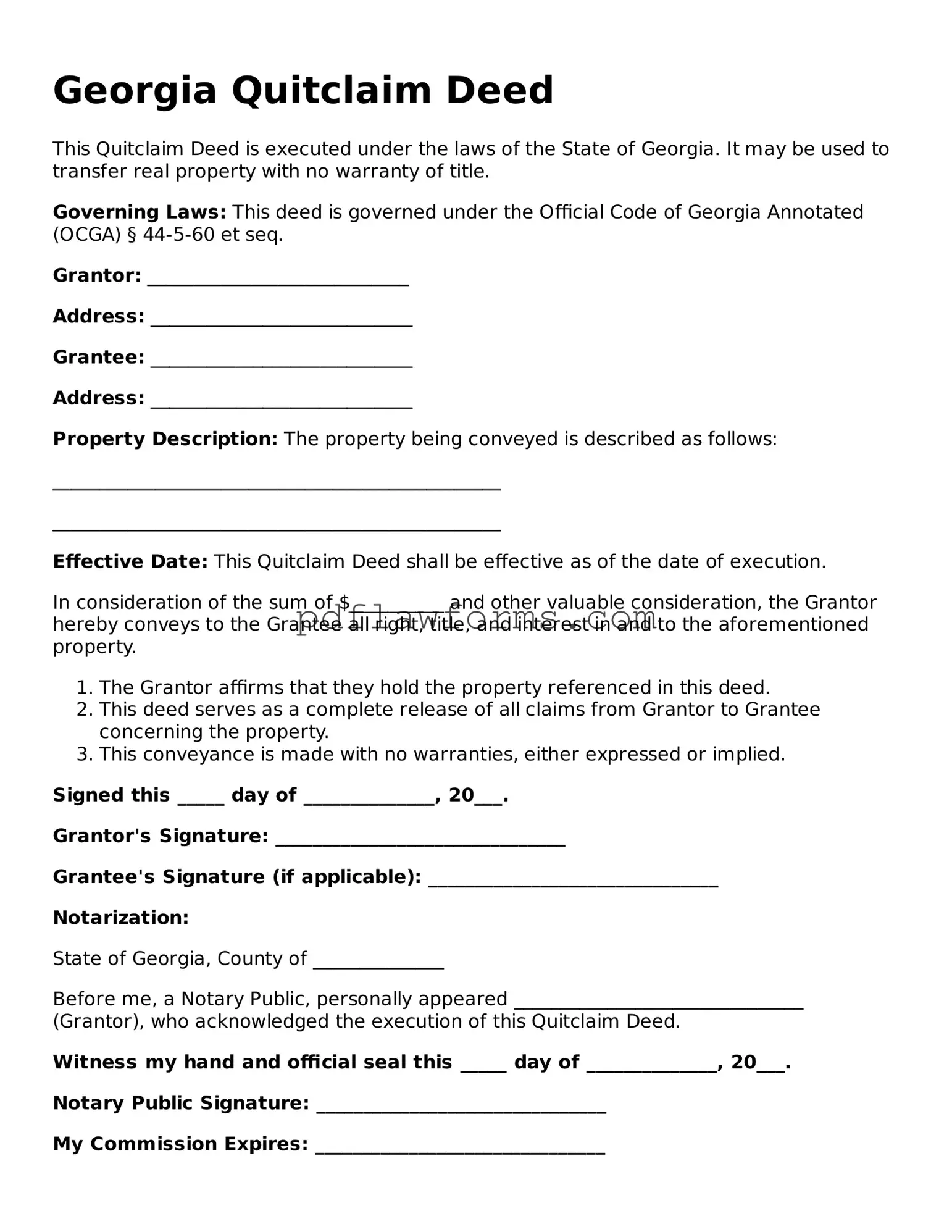Filling out a Quitclaim Deed form in Georgia can seem straightforward, but many individuals make common mistakes that can lead to complications down the line. One frequent error is neglecting to include the correct names of the grantor and grantee. The grantor is the person transferring the property, while the grantee is the recipient. If these names are misspelled or incomplete, it can create confusion and potentially invalidate the deed.
Another mistake often encountered is failing to provide the legal description of the property. This description should be precise and clear, detailing the boundaries and specifics of the property being transferred. Without this information, the deed may not be recognized, and the transfer of ownership could be questioned.
Many people also overlook the requirement for notarization. In Georgia, a Quitclaim Deed must be signed in the presence of a notary public. Without this crucial step, the deed may not be legally binding. It's essential to ensure that the signature is notarized to avoid future disputes regarding the validity of the document.
Additionally, individuals sometimes forget to include the date of the transfer. While it may seem trivial, the date is important for establishing the timeline of ownership. If the date is missing, it can lead to complications, especially if there are disputes over property rights in the future.
Improperly calculating transfer taxes is another common pitfall. Georgia imposes a transfer tax on property transactions, and failing to pay this tax can result in penalties. It’s crucial to check the current rates and ensure that the appropriate amount is submitted along with the deed.
Some individuals also neglect to record the Quitclaim Deed with the county clerk's office. Recording the deed is vital for public notice and protects the grantee’s rights. Without this step, the transfer may not be recognized, and the grantee may face challenges asserting ownership.
Finally, many people do not seek legal advice when completing the Quitclaim Deed. While it may seem like a simple form, the implications of errors can be significant. Consulting with a legal professional can help ensure that the deed is filled out correctly and meets all necessary requirements, ultimately providing peace of mind for both parties involved.
